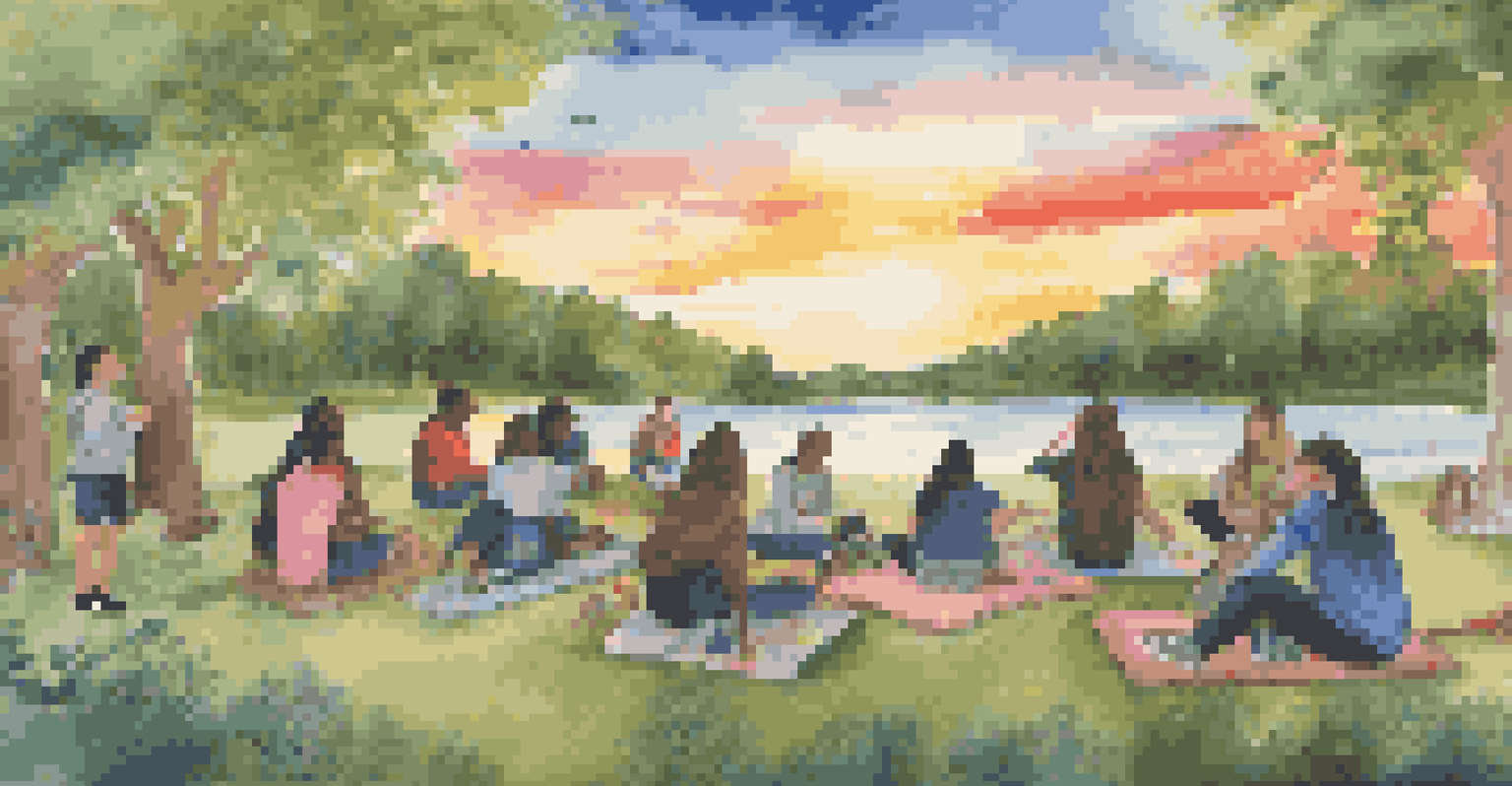Exploring Global Perspectives Through Art Education

The Importance of Art Education in a Globalized World
In our interconnected world, art education plays a pivotal role in bridging cultural gaps. It encourages students to explore diverse perspectives and understand the stories behind different artistic expressions. By engaging with various art forms, learners gain insights into the values and traditions of other cultures, fostering empathy and appreciation.
Art is the most beautiful of all lies; it is a lie that tells the truth.
Art education goes beyond just creating; it cultivates critical thinking skills. When students analyze artworks from different cultures, they learn to question and interpret meanings, enhancing their ability to think critically about the world around them. This skill is invaluable, as it prepares them to navigate complex global issues.
Moreover, art education can spark conversations about identity, history, and social justice. As students reflect on how art reflects societal challenges, they become more aware of the world’s intricacies. This awareness is essential for nurturing informed global citizens who can contribute positively to society.
Integrating Global Art Forms into Curricula
To truly explore global perspectives, art curricula must be inclusive of various cultural art forms. By introducing students to everything from African tribal art to Japanese calligraphy, educators can broaden their understanding of artistic expression. This integration helps students appreciate the diversity of human creativity.

Teachers can enhance learning by inviting local artists from different backgrounds to share their expertise. Workshops and demonstrations allow students to engage hands-on with various techniques and materials, making the learning experience more immersive. This direct interaction not only enriches their skills but also fosters a deeper connection to the art they are studying.
Art Bridges Cultural Divides
Art education fosters empathy and understanding by exploring diverse cultural perspectives.
Additionally, collaborative projects that connect classrooms globally can be incredibly impactful. For instance, a joint art project with students from another country encourages cultural exchange and shared creativity. Such initiatives not only build artistic skills but also promote teamwork and global friendships.
Art as a Tool for Social Change and Awareness
Art has long been a powerful medium for social change, and education can harness this potential. When students create art that addresses social issues, they become advocates for change. This process empowers them to use their creativity to voice concerns and inspire action in their communities.
Art is not freedom from discipline, but disciplined freedom.
Through projects focused on themes like climate change or inequality, students learn to express complex ideas visually. This not only enhances their artistic skills but also helps them articulate their beliefs and values. As they navigate these discussions, students develop a sense of responsibility towards societal challenges.
Moreover, art education can provide a safe space for dialogue about sensitive topics. By encouraging open discussions around the meanings and impacts of their work, educators create an environment where students feel heard and valued. This fosters a stronger sense of community and understanding among diverse groups.
Fostering Creativity Through Global Collaboration
Global collaboration in art education encourages students to think outside the box. When they work with peers from different cultures, they are exposed to new ideas and techniques that challenge their creative boundaries. This cross-pollination of thoughts can lead to innovative artistic expressions.
Participating in international art competitions or exhibitions allows students to showcase their work on a global stage. Such opportunities not only build confidence but also highlight the interconnectedness of artistic communities. Students realize that their unique perspectives contribute to a larger narrative, enriching the global art scene.
Creative Advocacy for Change
Students use art as a powerful tool to address social issues, empowering them to advocate for change in their communities.
Furthermore, these collaborations often lead to lifelong friendships and networks. By connecting with fellow artists from various backgrounds, students learn the value of diversity in creativity. This sense of belonging in a global community nurtures their passion for art and motivates them to continue exploring it.
The Role of Technology in Art Education
Technology has transformed art education, making it more accessible and interactive. Digital tools allow students to explore global art forms without geographical limitations. Online galleries and virtual museum tours provide a rich resource for students to study and appreciate artworks from anywhere in the world.
Moreover, social media platforms enable artists to share their work and connect with others globally. This exposure not only inspires students but also creates opportunities for collaboration and feedback. By engaging with a wider audience, they gain insight into how their art resonates with people from different cultures.
Additionally, technology facilitates innovative teaching methods, such as digital storytelling and virtual workshops. These approaches encourage students to express their ideas creatively while learning about global perspectives. As a result, technology becomes an essential partner in nurturing creativity and cultural awareness.
Encouraging Critical Discussions Around Art
Art education should not shy away from critical discussions about cultural appropriation and representation. By addressing these topics, educators can help students understand the ethical implications of their work. This not only informs their artistic practice but also fosters a deeper respect for the cultures they study.
Encouraging students to ask questions and challenge norms within art opens a dialogue about power dynamics and historical contexts. These discussions help students recognize their role in the art world and the broader implications of their creations. By exploring these themes, they develop a more nuanced understanding of global art narratives.
Global Collaboration Enhances Learning
Working with peers from different cultures encourages innovative thinking and nurtures a sense of belonging in the global art community.
Ultimately, fostering critical discussions equips students with the tools to navigate the complexities of cultural exchange. They learn to appreciate art not just as a product but as a reflection of societal values and histories. This awareness is vital for cultivating responsible and informed artists.
The Future of Art Education in a Global Context
As the world continues to evolve, so too must art education. The future lies in creating curricula that are adaptable and inclusive, reflecting the dynamic nature of global cultures. This approach ensures that students remain engaged and inspired by the diverse array of artistic traditions.
Moreover, educators must prioritize fostering global citizenship through art. By instilling values of empathy, respect, and collaboration, schools can prepare students to thrive in an increasingly interconnected world. Art becomes a vehicle for promoting understanding, acceptance, and cooperation among different cultures.

In conclusion, the future of art education is bright, with the potential to shape not only skilled artists but also thoughtful global citizens. By embracing diversity and promoting creativity, art education can continue to empower young minds to make meaningful contributions to society, fostering a world that celebrates cultural richness.